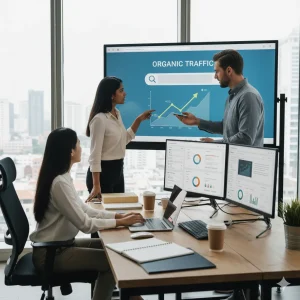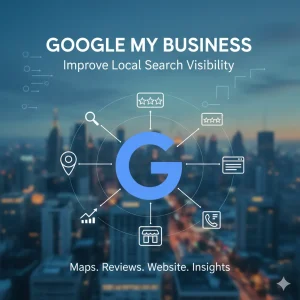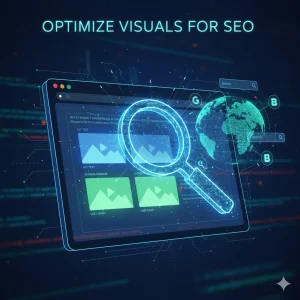Graphics have a significant role to play in how your users will act towards your site. Excellent photos and video do not merely make your site visually pleasing—excellent graphics assist in gaining better engagement, retention, and conversion. The search engines do not, though, “see” images like a human eye. Search engines are dependent upon optimization signals such as metadata, filename, and load time to decipher and rank your media content. Therefore, for search rankings and fast speeds, visual optimization of website images and videos is not an option.
Why Visual Optimization is Important for SEO
Optimizing images goes beyond looks. Completing the task improves page load speeds, user experience, and accessibility which all impact search results in real-time. Google prefers pages that serve fast, fluid, and helpful user experiences. Heavy, non-optimized images or videos can weigh your site down, cause bounce rates to rise, and hurt ranking potential.
Begin with Proper File Naming and Formats
Every optimization process begins with file names. Instead of uploading an image called “IMG_5678.jpg”, rename it to something more descriptive and keyword-rich. For example, if your photo is of a product, a better name would be “red-running-shoes-dubai.jpg”. This provides Google with a very strong indication of the image for ranking purposes.
It is file types. The right one is needed. JPEG is right for pictures, PNG is right for ones that have a transparent background, and WebP is right because it provides quality at smaller file sizes. The right one is what preserves speed and quality on target, and that is a very important function of how SEO functions.
Reduce Image Size without Sacrificing Quality
Large image files can substantially and negatively impact load times of your website leading to a poor user experience and lost visitors through to a drop in your organic rankings. Image compression is one of the simplest yet most powerful optimization techniques. Various applications exist that compress file size without any noticeable loss in quality; two examples are TinyPNG and Squoosh.
Utilize Alt Text and Descriptive Captions
Alternative text or alt text needs to be provided so that screen readers and search engines can comprehend what an image is about. It is particularly valuable for SEO as well as accessibility. Descriptive alt text for every single image on your site should be informative in nature in the inclusion of keyword-appropriate terms.
For example, rather than putting on the page the word “shoe,” put up “men’s black running shoes for marathon training in Dubai.” This is context, more keyword-rich, and takes your images to search viability.
Captions, while not necessary, also drive engagement. Captions are crawled by search engines, and people read captions more than they read body copy. With a good caption, understanding and engagement can be enhanced.
Host Videos on the Right Platform
Where your videos are hosted impacts performance and SEO. Whether your primary goal is to drive traffic and brand awareness, it is perfectly okay to host on YouTube or Vimeo because both websites boast massive built-in audiences. However, if you prefer users to stay on your website and increase its engagement metric, then self-hosting your video or an embedded player is the choice.
Make Sure to Load Quickly and Work Well on Mobiles
Mobile responsiveness and speed are amongst the top-performing criteria for image and video SEO. As the majority of the world now accesses the internet from mobiles, search engines top rank websites that load and work well on phones.
To speed loads, implement lazy loading for videos and pictures to load media files only when consumers see them. Use content delivery networks (CDNs) to deliver visuals from nearest servers to consumers. These actions decrease loads, increase consumer satisfaction, and improve your search rankings.
Keep Your Visual Content Updated
Optimization is not a one-time deal—it’s constant. There are new file types, SEO optimization methods, and search technology that come out over time. Periodically going through and reoptimizing your images and videos will keep them optimized for the new algorithms.
Use tools such as Search Console and Google PageSpeed Insights to detect performance issues. Update outdated visuals, update metadata, and keep refining your site’s visual SEO approach. Regular content refreshes remind Google that your site is new and useful.
Conclusion
If you need to ensure that your visual material gets viewed and drives quantifiable outcomes, Social CTR has got your back. With years of experience as one of Dubai’s top digital marketing companies, Social CTR provides cutting-edge SEO services such as visual optimization, structural data incorporation, and performance monitoring—positioning your business at the forefront of image and video search.




